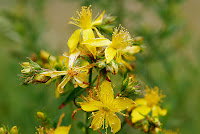Quetzals are strikingly coloured birds in the trogon family. They are found in forests and woodlands, especially in humid highlands with the five species from the genus Pharomachrus being exclusively Neotropical, while the single Euptilotis species is almost entirely restricted to western Mexico, also in Baja Verapaz, guatemala. They are fairly large (all over 32 cm or 13 inches long), slightly bigger than other trogon species. Quetzals have iridescent green or golden-green wing covets, back, chest and head, with a red belly. They are strongly sexually dimorphic, and parts of the females' plumage are brown or grey. These largely solitary birds feed on fruits, berries, insects and small vertebrates (such as frogs). Despite their bright plumage, they can be surprisingly difficult to see in their wood habitat.


The Resplendent Quetzal is found from southern Mexico to western Panama (unlike the other quetzals of the genus Pharomachrus, which are found in South America and eastern Panama). The quetzal plays an important role in Mesoamerican mythologies. The Resplendent Quetzal is Guatemala's national bird, and an image of it is on the flag and coat of arms of Guatemala. It is also the name of the local currency (abbreviation GTQ).
Resplendent quetzals are considered specialised fruit-eater, although they mix their niet with insects. Particularly important are wild avocados and other fruit of the laurel family, which the birds swallow whole before regurgitating the pits, which helps to disperse these trees.
These birds usually live alone when not breeding. They are monogamous territorial breeders, with the territory size being measured in Guatemala as 6-10 ha. They are also seasonal breeders with the breeding season being March to April in Mexico, May to June in El Salvador and March to May in Guatemala. When breeding, females lay two pale blue eggs in a nest placed in a hole which they carve in a rotten tree. A tree in the required stage of decomposition is susceptible to weather damage, and the availability of suitable trees may limit the resplendent quetzal population.

Both parents take turn at incubating, with their long tail-covert feathers folded forwards over the back and out of the hole, where they tend to look like a bunch of fern growing out of the hole. The incubation period lasts about 18 days, during which the male generally incubates the eggs during the day while the female incubates them at night. When the eggs hatch both parents take care of the young, feeding them fruit, berries, insects, lizards, and small frogs. However, the female often neglects and even abandons the young near the end of the rearing period, leaving it up to the male to continue caring for the offspring until they are ready to survive on their own.
MYTH & LEGEND: The resplendent quetzal was considered divine associated with the "snake god", Quetalcoatl by Pre-Columbian Mesoamerican civilisations. Its iridescent green tail feathers, symbols for spring plant growth, were venerated by the ancient Aztecs and Maya, who viewed the quetzal as the "god of the air" and as a symbol of goodness and light. Mesoamerican rulers and some nobility of other ranks wore headdresses made from quetzal feathers, symbolically connecting them to Quetzalcoatl. Since it was a crime to kill a quetzal, the bird was simply captured, its long tail feathers plucked, and then set free. Quetzalcoatl was the creator god and god of wind, often depicted with grey hair. In several Mesoamerican languages, the term for quetzal can also mean precious, sacred or erected.
The bird is of great relevance to Guatemalan culture, being a character in the widely popular legend of the local hero Tecun Uman, a prince and warrior of the Quiche Maya during the latter stages of the Spanish conquest of the region. This quetzal was his nahual (spirit guide). The Quiche repelled several attacks from the Spanish army, even though outmatched in weaponry (guns, armour and cavalry against spears and arrows).
Legend has it that on the day the conquistador Pedro de Alvarado fought against Tecun Uman, there was a quetzal flying overhead. On the first strike Tecun Uman, on foot, managed to disable Pedro de Alvarado's horse. Alvarado was then given another horse and on the second strike ran through Tecun Unman's chest with a spear. The quetzal flew down and landed on Tecun Umna, dipping its chest in the warrior prince's blood. It is there that the bird acquired its distinctive red chest feathers. It is debatable of course whether or not these events happened, but he Maya fought fiercely for their land and freedom during the conquest. One Mayan legend claims that the querzal used to sing beautifully before the Spanish conquest, but has been silent ever since; it will sing once again only when the land is truly free.
The resplendent quetzal is classified as "near threatened' on the IUCN Red List.
I was delighted to discover a rather special bird of which I had never of before heard and to learn so much about it. When I mentioned to Phil that I was putting the quetzal as my "Q" bird he said "Oh yes, they are associated with the Aztecs." It never fails to amaze me how much that man knows!! I asked him how he knew that and his reply was "I remember reading about it somewhere years ago."























-2.jpg)

























